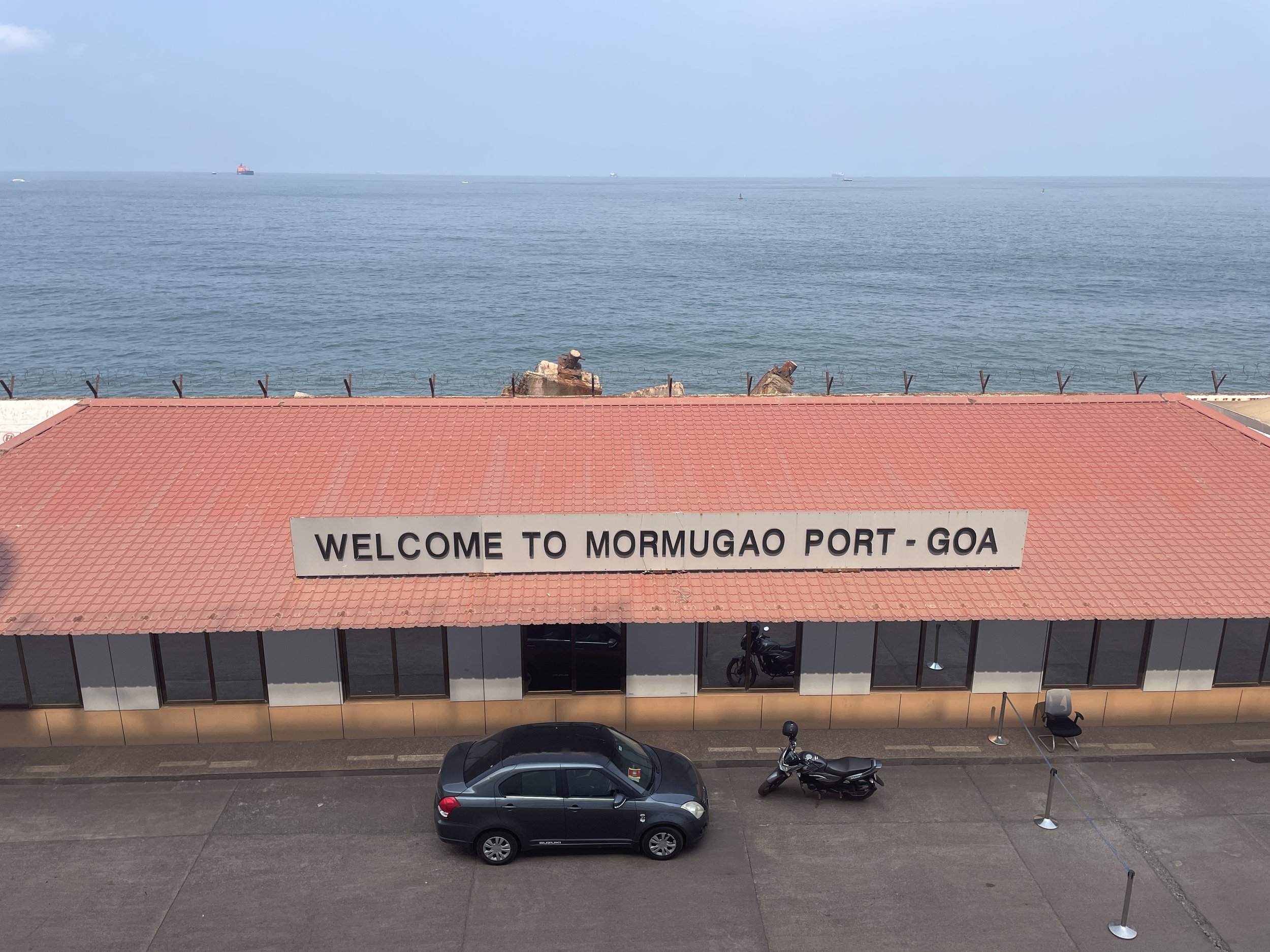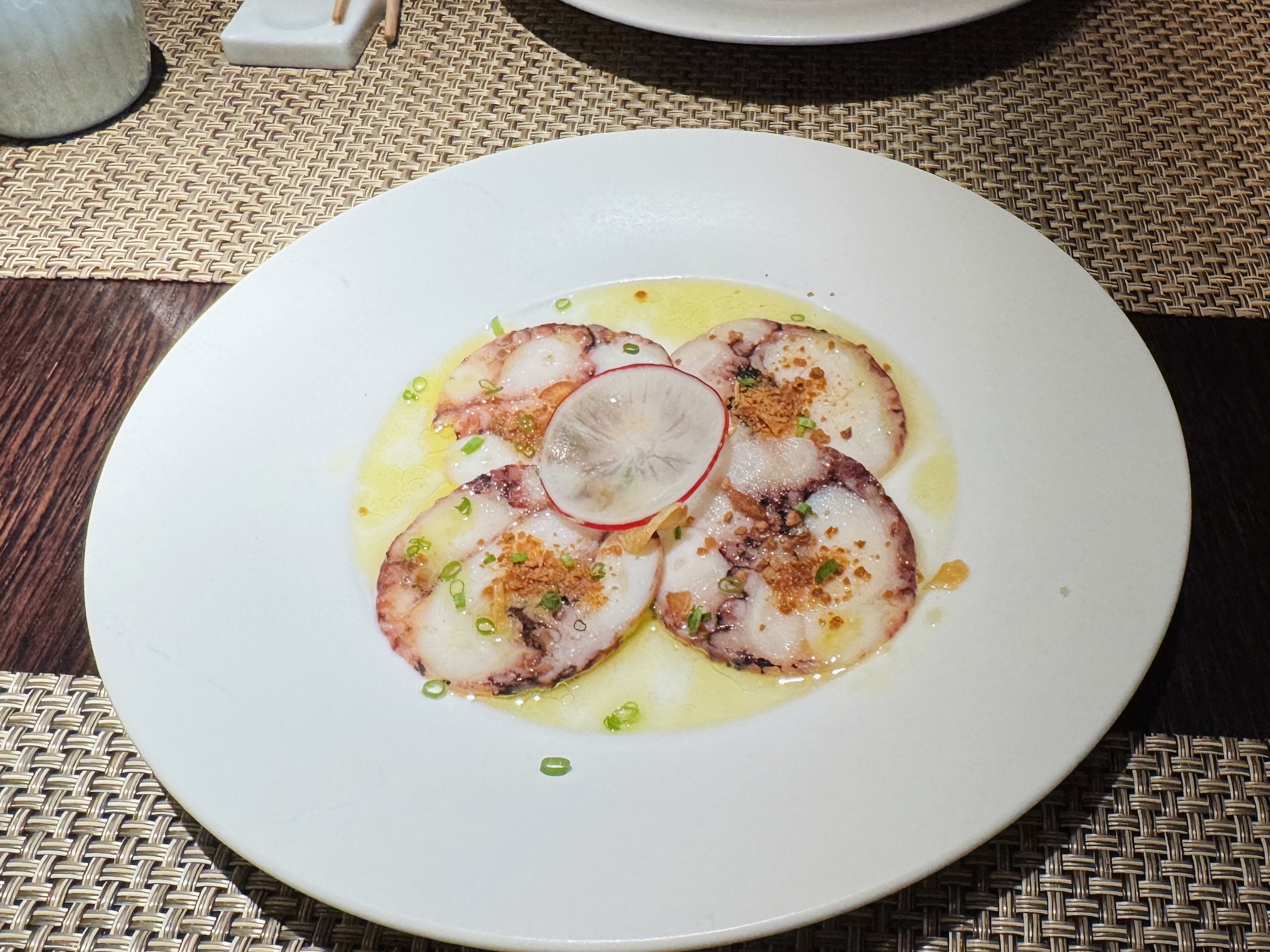Exploring Old Goa 老果阿
March 19, 2025
Disembarking at the Mormugao cruise terminal, we set out to explore the historic churches of Old Goa, a UNESCO World Heritage Site known for its grand Portuguese-era architecture and deep Christian heritage. To make the most of our limited time, we hired a taxi, which initially quoted $90 for the tour, but after negotiation, we settled on $50—still well above the local rate.
The 45-minute drive to Old Goa took us through lush tropical landscapes, offering glimpses of the region’s rich history beyond its famed beaches.
Our first stop was the Basilica of Bom Jesus, one of the most famous churches in India and a UNESCO-listed Baroque masterpiece. The church is best known for housing the remains of St. Francis Xavier, whose tomb lies within. No photography is permitted inside, which added to the solemnity of the experience. The basilica’s grandeur and historical significance made it a meaningful start to our tour.
Next, we walked across the street to Se Cathedral, one of the largest churches in Asia. The vast white façade and golden altarpiece were impressive, but the experience of walking under the scorching sun to reach the entrance made us realize just how intense the Goan heat could be.
Our third stop was the Church of St. Francis of Assisi, a unique fusion of Manueline, Tuscan, and Baroque architectural styles. The adjoining museum housed colonial-era artifacts, religious paintings, and sculptures, offering a deeper look into Goa’s Portuguese legacy. However, with no air conditioning inside, the heat was unbearable, so we walked through quickly, barely taking in the details. We then made a quick stop at the Chapel of St. Catherine, one of the lesser-visited sites in Old Goa.
Our last stop in Old Goa was the St. Augustine Tower, one of the region’s most iconic ruins. Originally part of the St. Augustine Church, the 46-meter-high tower is all that remains of what was once one of the largest churches in Goa. Unlike the crowded basilicas, this area was nearly deserted, allowing us to take in the grandeur of the crumbling structure in solitude. The contrast between the well-preserved churches and these haunting ruins made this one of the most memorable stops of the day.
On our way back to the cruise terminal, we made a brief stop in Vasco da Gama town to visit Shri Narsimha Sateri Devi Temple, a small yet significant temple for the local Hindu community. We also paused for a photo at the Old Vasco Clock Tower, a historic landmark that once served as the town’s central timepiece.
This tour marked the end of our one-week visit to India, a journey filled with unexpected experiences and lasting impressions. India offers a vibrant blend of contrasts—where overwhelming crowds and never-ending honking meet warm hospitality, and where grand palaces and modern skyscrapers stand beside bustling slums. The resilience and ability to survive in challenging conditions left us with admiration and deep respect for the people of this fascinating country.
After returning from the tour, we dropped by the Bistro for a few light snacks. Dinner was at the long-awaited UMI UMA by Nobu, our favorite Japanese restaurant on the cruise. We ordered many of our usual favorites and also tried a new dish—Crispy Rice with Spicy Tuna Tartare. The deep-fried rice cakes reminded us of Chinese ci fan gao (sticky rice cakes). We liked it so much that after finishing the first plate, we ordered a second one.
老果阿
2025年3月19日
今天是这次邮轮的第一站,抵达莫尔穆冈(Mormugao)邮轮码头后,我们踏上了探索老果阿(Old Goa)的旅程。这座城市被联合国教科文组织列为世界文化遗产,以其宏伟的葡萄牙殖民时期建筑和深厚的基督教文化而闻名。旧果阿离我们的船码头有些距离,在码头外,我们租了一辆出租车,起初司机开价90美元,经过一番讨价还价,我们最终以50美元成交——但仍远高于当地的价格。
经过45分钟车程,我们的第一站是邦波耶稣大教堂(Basilica of Bom Jesus),这是印度最著名的教堂之一,也是一座联合国教科文组织列出的巴洛克风格杰作。教堂最为著名的是保存完好的圣方济·沙勿略(St. Francis Xavier)遗体安息在华丽的圣棺中,吸引着世界各地的朝圣者。教堂内部禁止拍照。
接下来,我们冒着炎炎烈日穿过街道,前往圣凯瑟琳大教堂(Se Cathedral)。这座教堂是亚洲最大的教堂之一,洁白的外墙和镀金的祭坛令人叹为观止。然而,在炙热的阳光下步行并不轻松,我们很快意识到果阿的酷暑是多么让人难以忍受。
我们的第三站是圣方济各·阿西西教堂(Church of St. Francis of Assisi),它融合了马努埃尔式、托斯卡纳式和巴洛克式建筑风格。毗邻的博物馆收藏了殖民时期的文物、宗教绘画和雕塑,展示了果阿深厚的葡萄牙文化遗产。然而,博物馆没有空调,闷热难耐,我们只能快速浏览后匆匆离开。随后,我们短暂停留在圣凯瑟琳小教堂(Chapel of St. Catherine),这是一处较少游客造访的历史遗迹。
在老果阿的最后一站,我们来到圣奥古斯丁塔(St. Augustine Tower),这里是该地区最具标志性的遗迹之一。曾经的圣奥古斯丁教堂如今仅存下一座高46米的塔楼,而这座教堂曾是果阿最大的教堂之一。站在遗迹之间,我们不禁想象着当年的辉煌景象。这座教堂因被遗弃和年久失修而逐渐倒塌,如今只剩下这座孤独的塔楼,与我们刚刚参观的完好无损的教堂形成鲜明对比。幸运的是,这里游客稀少,只有我们两人,让我们得以静静欣赏这片宁静而神秘的遗址。
在返回邮轮码头的途中,我们短暂停留在瓦斯科达伽马镇(Vasco da Gama),参观了Shri Narsimha Sateri Devi神庙,这座小型的印度教寺庙对当地社区具有重要意义。随后,我们在瓦斯科老钟楼(Old Vasco Clock Tower)前停留拍照,这座葡萄牙殖民时期的历史地标,曾是该镇的中心时钟。
今天的旅程标志着我们为期一周的印度之行的结束,这次的印度游有着许多意想不到的经历,给我们留下深刻的印象。
晚餐是期待已久的UMI UMA by NuBu, 邮轮上我们最喜欢的日本餐厅。点了许多以前常吃的东西,还尝试了新口味CRISPY RICE WITH SPICY TUNA TARTARE, 油炸的米饭糕块像中国的糍饭糕,吃完一份又叫了第二份。





































